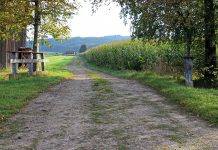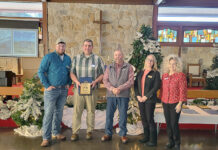
Autumn has officially arrived!
That means it’s almost time for corn mazes, pumpkin patches, apple orchards and hayrides — activities that drive unfamiliar visitors to farms. While it’s exciting to partake in seasonal events, it’s important to implement safety practices, especially on hayrides where large equipment is being used.
Outlined below are some quick tips to ensure safety during hayrides.
Before the hayride
Liability insurance: Many farms are under-insured when it comes to liability coverage, especially if they start opening their doors to the public. Before offering events like hayrides, be sure to check with your insurance agency to make sure you’re level of liability insurance is adequate.
Plan the route: Planning the route to identify hazards, avoiding on-road travel and ensuring emergency access are all very important to a successful hayride. Some things to consider are overhead branches, wires, irrigation heads, sharp turns, steep inclines, uneven ground and poorly drained soil.
Tractor and equipment preparation: The tractor you select should be equipped with a Rollover Protective Structure and should be large enough to handle and stop the loaded wagon without trouble. Additionally, it needs to be serviced before running hayrides. For more information see Rutgers’ checklist.
Inspect the straw: Fresh dry straw should be used for hayrides. Damp or wet straw can be slippery and prone to mold.
Training and communication: The driver should be trained specifically in the operation of the tractor he or she will be using for the hayride, meaning he or she should be able to start and stop smoothly. He or she should also be instructed to drive slowly. It is also important of the employees loading and unloading the visitors to be trained, have some first aid experience and be able to use a fire extinguisher. Additionally, utilizing two-way radios or visual communication between employees can be a big help.
Crowd control: Managing the flow of your visitors is very important. Along with having signs leading you visitors from one area to the next, it is also important to have your hayride route clearly marked. Some sort of barricade or fencing at the loading and unloading station for the hayride can useful to make sure visitors are entering and exiting one at a time and your employees can control the flow of visitors on and off the wagon.
Loading and unloading: To avoid injuries getting on or off the hayride, having a well organized procedure and designated loading and unloading areas is essential. The loading area should also include signs that clearly list basic safety rules as well as minimum age and height requirements to ride without alone. These rules should be recited after the wagon is loaded by a farm employee before the hayride pulls away. Here is an example of hayride safety rules for passengers to follow:
- Load and unload one person at a time
- Don’t walk on hay bales
- No children on back bales
- Entrance(s) must be attended by adults
- Remain seated while ride is in motion
- Keep arms and legs in at all times
- No horseplay
- No smoking
- No lighters
- No camcorders or flash cameras
- No laser pointers
- No food or drink permitted
- No alcohol
Hayride safety checklist: Once you have everything set up before your guests arrive to ensure their safety on your hayride go over a final checklist one more time. Check out this 15-item hayride safety checklist from the National Children’s Center for Rural and Agricultural Health and Safety.
During the hayride
Tractor operation: Aside from making sure your drive is familiar with the tractor and ensuring that the chosen route is mainly off road, there are a few other precautions to take. The driver should never allow anyone between the wagon and tractor while he or she is moving — this includes keeping passengers off the wagon tongue. Drivers should move slowly, at a brisk walking pace. Driver should never take a spontaneous detour as the chosen route has been vetted for any obstacles and altering it could bring unforeseen dangers.
Supervision: Supervisors should be present on the hayride to ensure all passengers follow the rules of the hayride — keeping hands and feet in the wagon, remaining seated, etc. They are also useful in assisting in loading and unloading, as well as providing communication with the driver and maintaining supervision guidelines. The recommended adult to child ratios can be found here.









